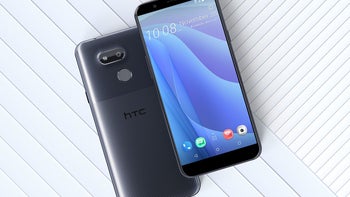HTC Desire 12s launch reminds us why the company is not doing so well

HTC may not be giving up on the smartphone market yet, hoping 5G connectivity and blockchain technology will somehow get the financially struggling company back in the game, but until that happens, the instantly forgettable Desire 12s has just been formally unveiled and commercially released in Taiwan.
This is the tech giant’s first “mainstream” device in several months, and seeing as how the Desire 12 and 12+ are widely available in Europe, an expansion out of Asia definitely doesn’t feel out of the question for the HTC Desire 12s.
There’s obviously no need to own cryptocurrency to purchase this modest 5.7-incher, which starts at the reasonable equivalent of $195 or so in HTC’s domestic market. Unfortunately, you don’t get a lot of bang for your (Taiwanese) buck, as the entry-level configuration includes 3GB RAM and 32 gigs of internal storage space.
A 4/64GB variant fetches around $225, but just like the lower-end model, this packs a humble Snapdragon 435 processor. The 5.7-inch display doesn’t look all that bad, sporting relatively thin bezels (by low to mid-end standards), but alas, the HD+ pixel count (1440 x 720) also feels a tad on the underwhelming side of things.
The U12 Life-borrowed two-tone design is certainly a nice, elegant touch for an otherwise uninspiring product, aiming to offer the best of both worlds with an original glossy texture and matte finish combination.
Still, there’s simply nothing exciting or “modern” about the HTC Desire 12s specifications. We definitely understand why a conventional rear-mounted fingerprint scanner was chosen over a cutting-edge in-display biometric recognition solution, but single front and rear-facing cameras (13MP each) sound like a tough sell in this day and age. Especially when the rear shooter looks so... weird. The pre-installed Android 8.1 Oreo software doesn't feel ideal either, while the 3,075 mAh battery is… not great, but also not terrible.
This is the tech giant’s first “mainstream” device in several months, and seeing as how the Desire 12 and 12+ are widely available in Europe, an expansion out of Asia definitely doesn’t feel out of the question for the HTC Desire 12s.
There’s obviously no need to own cryptocurrency to purchase this modest 5.7-incher, which starts at the reasonable equivalent of $195 or so in HTC’s domestic market. Unfortunately, you don’t get a lot of bang for your (Taiwanese) buck, as the entry-level configuration includes 3GB RAM and 32 gigs of internal storage space.
A 4/64GB variant fetches around $225, but just like the lower-end model, this packs a humble Snapdragon 435 processor. The 5.7-inch display doesn’t look all that bad, sporting relatively thin bezels (by low to mid-end standards), but alas, the HD+ pixel count (1440 x 720) also feels a tad on the underwhelming side of things.
The U12 Life-borrowed two-tone design is certainly a nice, elegant touch for an otherwise uninspiring product, aiming to offer the best of both worlds with an original glossy texture and matte finish combination.
Still, there’s simply nothing exciting or “modern” about the HTC Desire 12s specifications. We definitely understand why a conventional rear-mounted fingerprint scanner was chosen over a cutting-edge in-display biometric recognition solution, but single front and rear-facing cameras (13MP each) sound like a tough sell in this day and age. Especially when the rear shooter looks so... weird. The pre-installed Android 8.1 Oreo software doesn't feel ideal either, while the 3,075 mAh battery is… not great, but also not terrible.










Things that are NOT allowed: